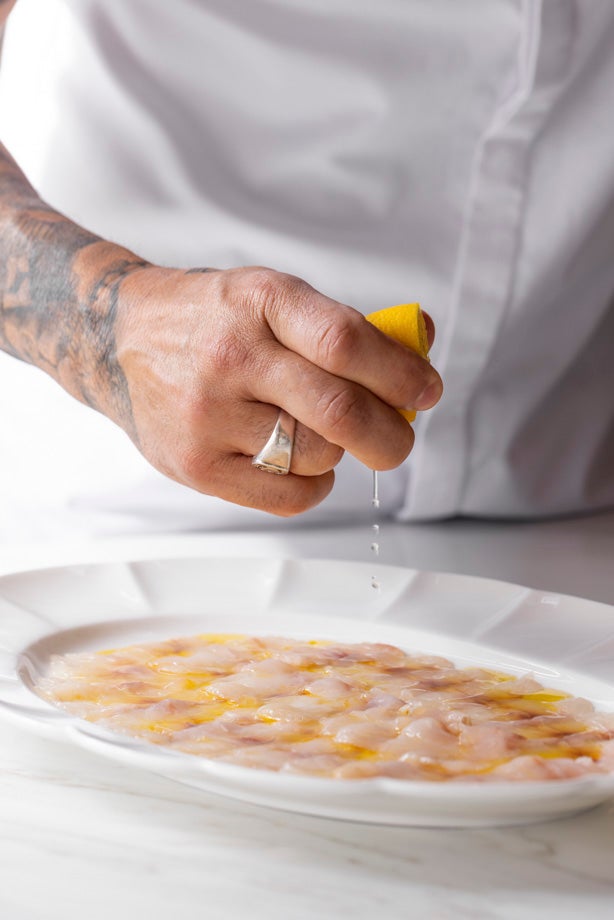I grew up in an Italian immigrant neighborhood where going to the market was part of daily life. I’d tag along with my grandmother, who always asked the right questions: Where did this come from? How fresh is it? Can I smell it? That’s how people used to shop. You went to a butcher, a fishmonger, a specialty store—places where someone actually knew what they were selling.
We’ve lost that connection. Most people buy fish from a grocery store with no one there to guide them. But if you go to the right place, that experience still exists. When I buy seafood today, I call my guy and ask, Where are these scallops from? Who caught them? And he knows.
Branzino is a perfect example. It’s mostly farmed these days, though you can still find wild-caught in Europe. In Los Angeles, it’s on almost every menu. If I’m buying one to cook at home, I go to someone I trust—like Liwei Liao—and I tell them how I’m preparing it. Am I salt-baking it? Making crudo? A good fishmonger will guide you to the best result.
Knowing where your fish comes from and how to handle it makes all the difference—and with the right technique, you can turn it into something incredible.














